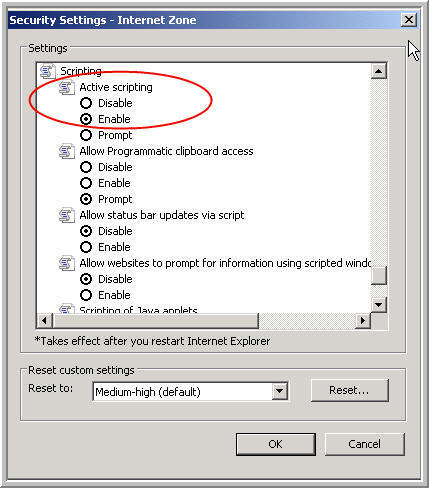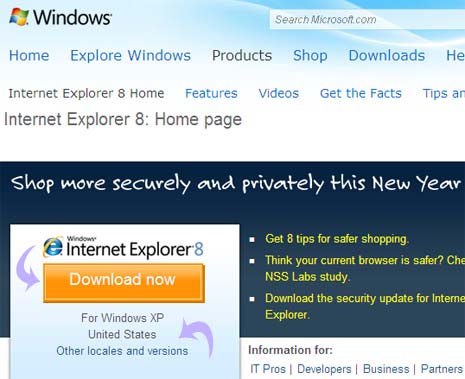

EMET 3.5’s ROP mitigation blocks both the Java6 and hxds.dll ROP chains used in the exploits we have analyzed.Īppcompat shim-based protection tool available for testing

EMET’s Export Address Filtering (EAF) mitigation blocks the shellcode used in the targeted attacks we have analyzed. EMET’s Mandatory ASLR mitigation will block both the Java6-based and hxds.dll-based ASLR bypass.
#SECURITY UPDATE INTERNET EXPLORER 8 INSTALL#
Disabling the ms-help protocol handler AND ensuring that Java6 is not allowed to run will block the ASLR bypass and the associated ROP chain.Īnother alternative – one likely to have less impact on your browsing experience – is to install EMET and enable it to protect Internet Explorer.Disabling Flash will prevent the ActionScipt-based heap spray from preparing memory such that the freed object contains exploit code.Disabling Javascript will prevent the vulnerability from being triggered initially.However, until the update is available, customers using Internet Explorer 8 can block the current targeted attacks by introducing changes to disrupt any of the elements of the exploit. And the IE team is working around the clock to develop a security update to address this vulnerability for earlier versions of the product. Internet Explorer 9 or 10 do not include the vulnerable code.
#SECURITY UPDATE INTERNET EXPLORER 8 CODE#
The best protection against exploits for this vulnerability is for the vulnerable code to not be present.

In this particular vulnerability, IE attempts to reference and use an object that had previously been freed. More information about the vulnerability and exploit Internet Explorer 9 and Internet Explorer 10 users are safe. Today, the MSRC released Security Advisory 2794220 alerting customers to limited, targeted attacks affecting customers using Internet Explorer 6, 7, and 8.


 0 kommentar(er)
0 kommentar(er)
